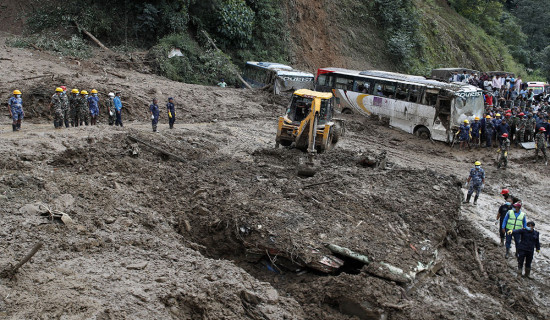- Monday, 30 September 2024
Issues Female Journos Face
Aditi Mishra
Although the number of women journalists in Nepal has increased exponentially in the past decade, they still face challenges with respect to their sustainability in the field of journalism.
The question is not about women’s ability to hold their position but about the environment that may or may not force them to quit. According to Free Press Unlimited (FPU), which offers journalists and media professionals worldwide supports through its advocacy work, training, advice and emergency assistance in order to create an enabling environment for reporting, among the many threats and issues that women journalists face, gender discrimination or injustice in the workplace ranks the first.
Gender discrimination has many types, such as undermining the competence of women journalists, misogyny in the workplace, inequality in wages, no women in leadership positions and women journalists are generally not allowed to cover “hard news” but only limited to certain beats.
On the other hand, according to Reporters Without Borders, Nepal only has about 15 per cent of journalists are women. This indicates that women journalists have increased in numbers, but this number does not compensate for the decline in women journalists continuing this profession.
The persistence of traditional beliefs is a phenomenon that has been constant in the lives of those women who try to break the chains of the society and free themselves to the unequal gender roles that they have been assigned. But, even today, a general resignation of women towards their careers is because of these chains of religion, role and responsibility. Additionally, in Nepal, women journalists face not only social but also economic setbacks due to lower wages than that of men. Activists and organisations working to provide a safe environment for women journalists in the country have time and again pointed out that the latter are not paid enough for the amount of work and time they put in. Many women journalists are not even hired, unless they have a pretty face for television.
Due to this, most women journalists only work as stringers or rather give up on their careers entirely. The government ensures equal pay to all, it favours channelling its advertisements and funds to only those media that support its policies. Since the expansion of the internet in Nepal, the number of cases related to online harassment or trolling of women journalists has been on the rise.
Often, these kinds of harassment are sexual in nature, targeted to silence women journalists who dare to write about any sensitive issues. Due to such harassments, women journalists have been mentally upset and have even had to quit journalism for their mental well-being. Different media outlets, however, seem to have been giving coverage to such cases.
FPU states that women journalists in Nepal have had to deal with online stalkers and unwanted spam messages, including sexualised pictures and videos, while some even have received death and rape threats, mostly common for Indian women journalists. In a nutshell, in any profession that women work, they work their lives off getting minimum pay, facing misogyny, harassment and discouragement. The voice of women can only be brought to justice by women journalists in our society. They are the bridge to vulnerable women and girls that have been left unattended and in shackles.














